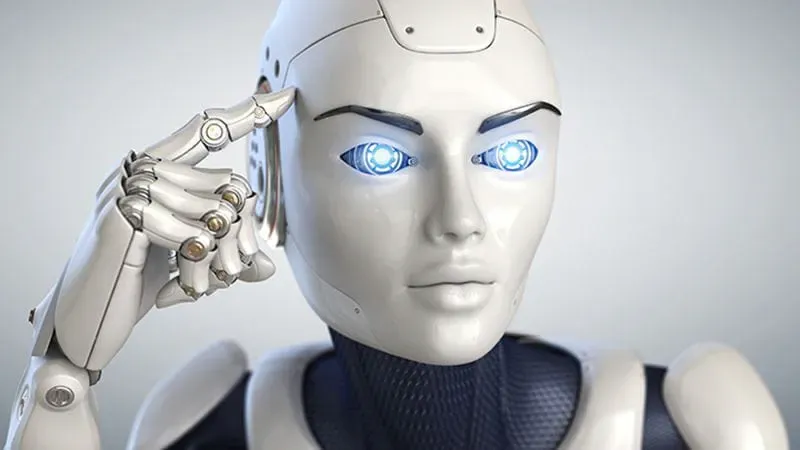Robots: Friends or Foes?

When you think of robots, what comes to mind first? Perhaps Arnold Schwarzenegger’s portrayal of a humanoid assassin from the future in The Terminator, or Baymax, the friendly healthcare assistant from Big Hero 6? Robots have alternately been viewed by humans with both fascination and fear, as seen in the many different visions of robots featured in popular culture, through comics, films and books. Regardless of these perceptions, robots are both visibly and invisibly playing a more prevalent role in our lives.
The term “robot” is from the Czech word for “forced labor,” originally used in a play by Karel Čapek about a mechanical workforce that rebelled against its human creators. Perhaps justifiably, many workers have a fear of automation and the loss of jobs it can bring. “But actually, we needn’t consider robots in this way,” says Yusuke Takita from the marketing department at Trelleborg Sealing Solutions in Japan. “They can create more jobs and move people away from repetitive or hazardous tasks to more important and higher-level jobs that truly add value.”
Humankind already makes good use of robots to operate in hazardous environments. Industrial arms handle high temperatures and poisonous atmospheres. Another example is the exploration rovers that traverse the surface of Mars to provide scientists with valuable data about the planet. “Use of robots can advance humanity as a whole, especially when working side by side,” Takita says. “And, as costs of robots fall, more menial tasks can be further automated.”
With increased focus over the past decade on increasing efficiency and optimization, freeing people for more important work is crucial. Simple tasks could be performed by a robot that would previously have been considered too expensive, with machines designed to reduce repetitive strain injuries or to lift and transport heavy loads, further reducing the harmful impacts that work can have on humans.
In 2010, at least 120,000 robots were installed in manufacturing facilities. Five years later, 254,000 units began their diligent work in production lines across the world. The latest reports state that in 2020, more than 2.7 million robots were at work in facilities across the globe, an increase of 12 percent over 2019, with more than 373,000 units shipped in the last year alone, according to the International Federation of Robotics, 2020.
The automotive industry was the first to adopt robots in the 1960s and even now, 60 years later, it is the largest purchaser of industrial robotics. “Thirty percent of industrial robots are being sold to automotive companies,” Takita says. “Investments in new modern production methods and increased production capacity in emerging markets have increased demand. But the electronics market is definitely competing for the number one spot now.”
Globally, Asia is the largest market for industrial robotics. “Two out of every three new robots in 2018 were installed in the region,” Takita says. When looking at the figures, it’s hard not to notice that five countries stand out. “China, Japan, the U.S., South Korea and Germany account for 74 percent of global robot sales,” he says.
As Industry 4.0 encourages manufacturing trends that incorporate more automation and data-driven approaches (the so-called Fourth Industrial Revolution), the robotics industry is the natural forerunner for many of these systems.
“We’re seeing increased desire for complete autonomy using artificial intelligence (AI), not just in production, but in ordering and transporting, now termed manufacturing execution systems, which tie in with enterprise resource planning,” says Takita. “The robots are fully integrated into the system and improve all the time as more and better data is available and further connectivity is possible.
“Demand for trainable AIs and upscaling of existing systems is also increasing as companies explore this exciting new field. Much of Trelleborg’s focus is in the already huge industrial robotics market, where they can add value to new applications requiring precise motion with advanced specifications.
“We’re also expecting to see more movement from automation to autonomy,” Takita continues. “Automated Guided Vehicles (AGVs), which rely on lines, wires or magnets to navigate, are more often being replaced by Autonomous Mobile Robotics (AMRs).” Unlike AGVs, AMRs don’t require supporting infrastructure and are frequently implemented for product picking optimization in logistics. They need just “start” and “finish” locations and can safely navigate around obstacles, choosing the most efficient alternate route.
As costs come down, more personal-use robots are entering the market with interesting new purposes. The vacuum cleaner robot is already taking the drudgery out of housework in many households. In the not-so-distant future, you could have a robot “coach” that analyzes your form while weightlifting or playing sports and tells you how to correct your posture, while another robot teaches your children in school. “Healthcare and medical can certainly gain from recent technological innovations,” Takita says. “AI-based, data- riven diagnostic systems, personalized medicine and assistants for people with special needs are more than possible now.”
The first robots for surgery were designed in 1985, and the first tele-surgery took place in 2001. Now, digital and robotic tools are permeating all aspects of medicine, enabling more patient-centric approaches. Smart devices allow patients to monitor their own health “on the go,” and expectations are growing for more and more medical devices to incorporate the same functionality. This brings additional challenges for the components within. New medical devices must be smaller to allow a wearer to conceal them, requiring them to be less invasive and easier to use.
“Accelerating the development of new devices requires close collaboration between manufacturers and their suppliers,” Takita says. “Using newer technologies, such as precision multicomponent molding, the possibilities for miniaturization and part consolidation are greatly extended — making products that can be absolutely life-changing for patients, giving new hope and improving quality of life in a way that was completely impossible only a short time ago.”
This is an article has been reproduced from Trelleborg's T-Time magazine. To download the latest edition, go to: www.trelleborg.com/t-time